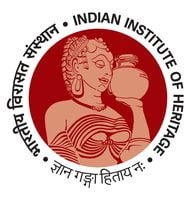There has been a maxim that each pebble of Kashi/Banaras represents Shiva. Naturally moulded such a lingam is called Banalinga and it differs visibly from the man-made lingam. Not only man-made and nature made lingams, entire ancient Kashi and its neighbourhood laid bare huge number of ancient vestiges. Rajghat excavations exposed many interesting archaeological specimens including a pottery type, popularly known as Northern Black Polished potteries. This pottery culture coincides with the Mauryan period (c. 3rd century BC), a period that witnessed perhaps, the production of the best pillar capital of India at Sarnath.
At the outset, one must admit a fundamental disjunction between the religious traditions associated with individual Hindu monuments of Banaras and their architectural history. Hindu cult images and emblems have been under veneration in the city since earliest times; indeed, many of ancient deities and lingams are specified in texts such as the Kashi Khanda and Kashi Rahasya, though we note that these sources are no earlier than the 14th century. Yet the forces of destruction that beset Banaras from the 12th century onwards were so thorough that not a single temple belonging to the period before the 18th century stands complete within the urban area.
Taking in view the vast gamut of archeological investigations, puranic literature, treatises, it can easily be established that at least since 1000 BCE, the city of Varanasi has recorded succession and sustenance of shrines and temples at different levels, in different forms and distinct appearance in terracotta, sculpture, images and such art forms. Of course, Shiva has been the patron deity and predominant object of representations; however, there scattered everywhere images of other traditions like primordial and nature-based religion, Buddha, Jain, folk deities, etc. Many of them were merged as affiliates of Shiva and his family, as exemplified in the tradition of Pañchadeva group, consisting of Surya, Ganesha, Devi, Vishnu and above all Shiva. During late 12th and mid-17th centuries the religious landscapes were destroyed and superimposed with Muslim representations (i.e. Mosques); however, in majority the site, main images and portions of the built structures have been existent in different forms, which later taken as platform and base for the new waves of restoration and re-creation under the umbrella of making the livability and spirit of place.
In the era of revival and resurrection of Hindu dharma, repairing, renovation and conservation of many of the ancient temples began during CE 18th – 20th centuries, resulting to making temples on the old sites and also new sites taking in view the old descriptions, and revitalizing the spiritual spirit through the spatial transposition (sthanika punarajivana) and transferring of ethereal breath of divine beings (prana pratishtha). This was supported and sponsored by royal families, kings and landlord from all parts of India, however role of Peshwas has been distinct.
In this section, important and active Puranic and 18th-20th century temples from Varanasi are discussed.


